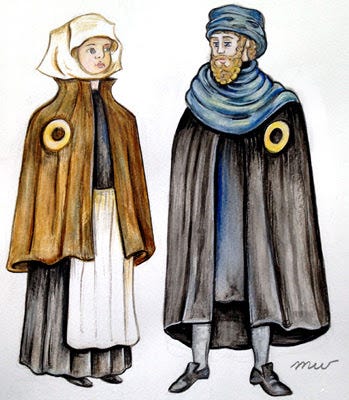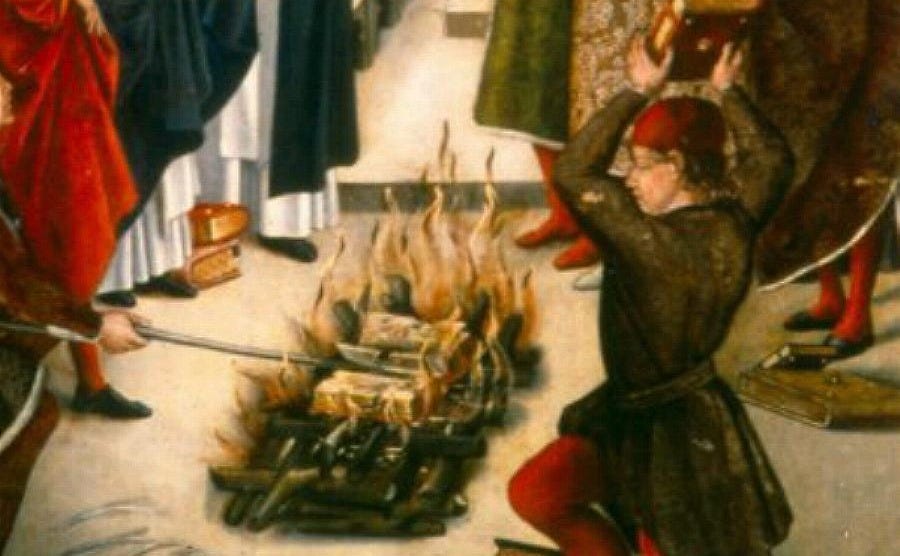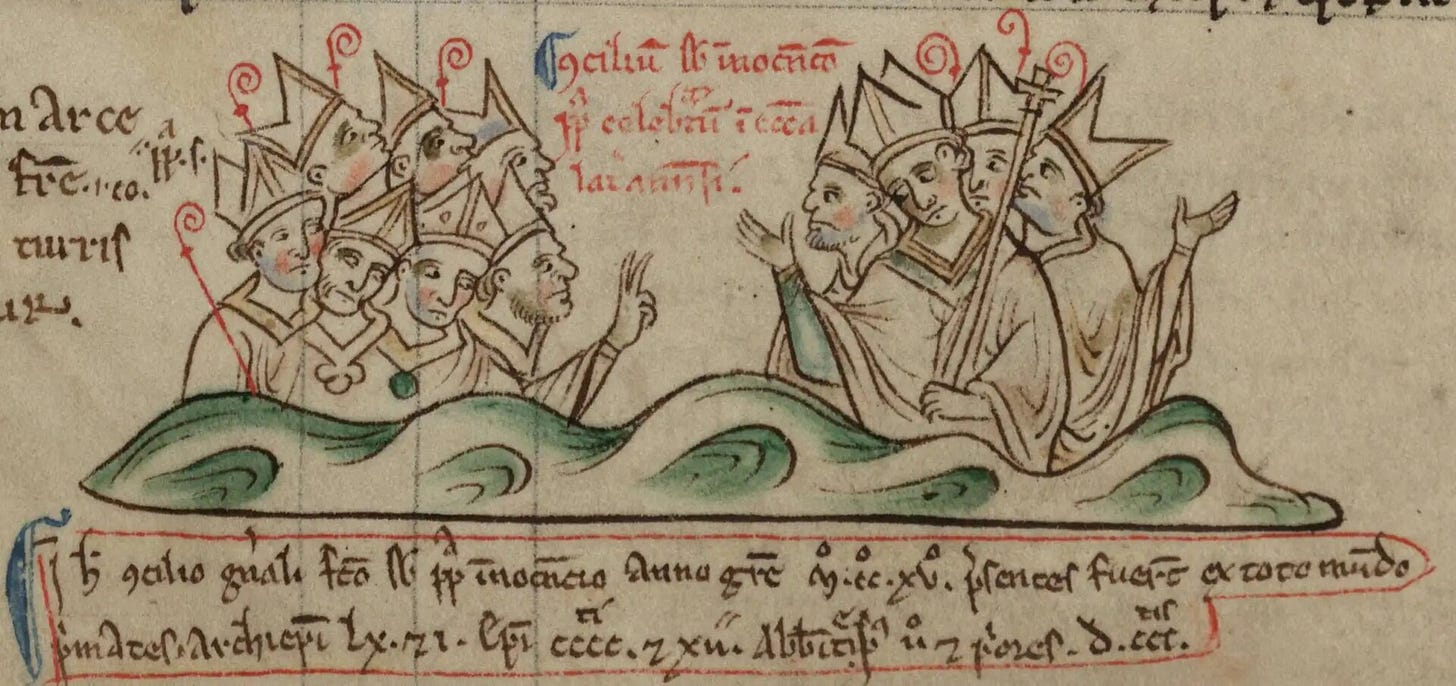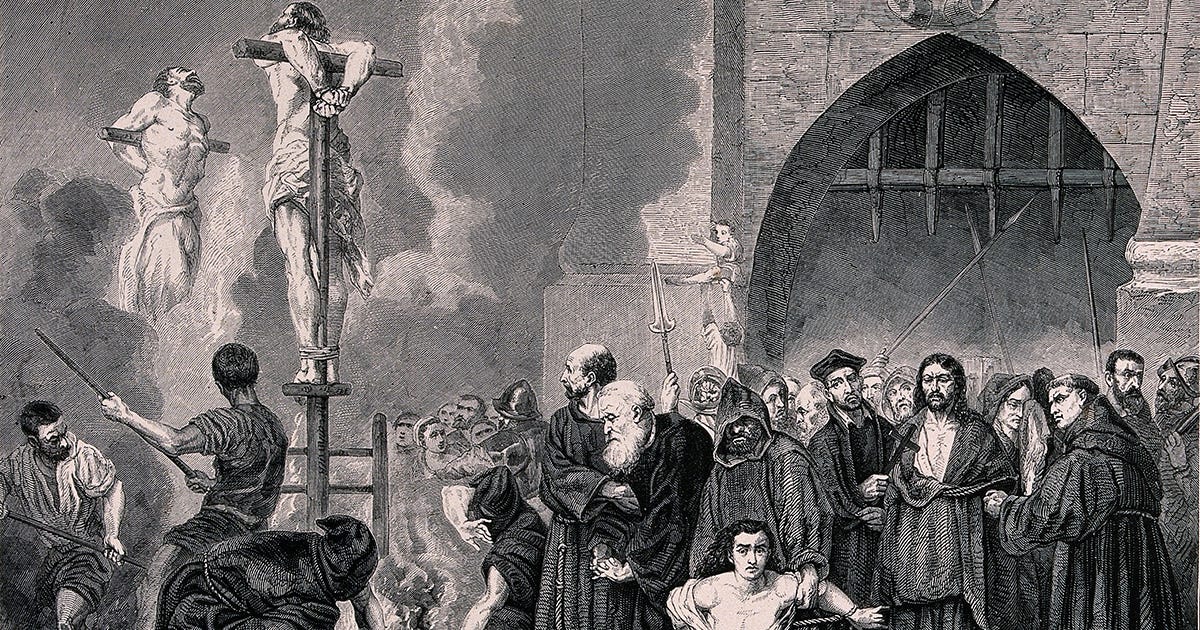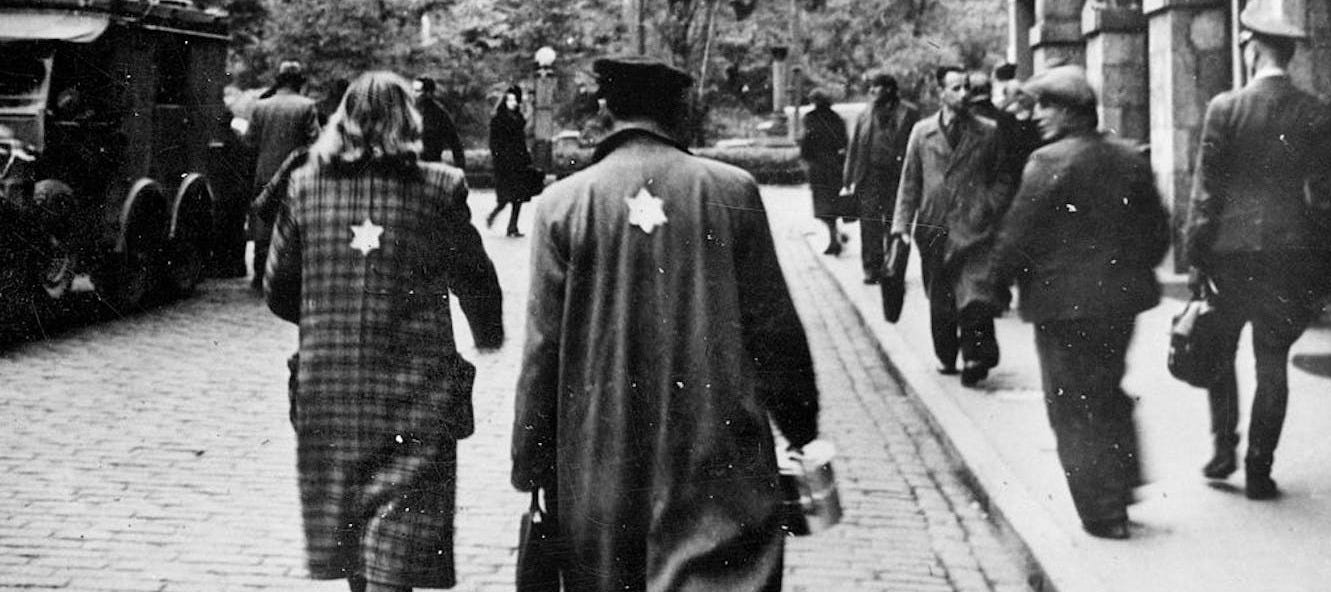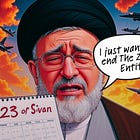Branding the Jew: From Medieval France to Modern Times
June 19, 1269: The Day the Jews Were Marked in France
On June 19, 1269, King Louis IX of France issued a decree that all Jews in his kingdom must wear a yellow badge when appearing in public—or pay a fine of ten livres of silver.
It wasn’t the first such order in history, and tragically, it wouldn’t be the last.
The badge, called the rouelle (“little wheel” in Old French), was a deliberate symbol of exclusion and humiliation. Its purpose was not only to mark Jews as religiously separate, but to make sure they were visibly inferior in the eyes of the Christian majority. It was social branding. Marked. Set apart.
The King who issued it—Louis IX—is still remembered by many as Saint Louis. Canonized by the Catholic Church, celebrated for his piety.
But piety and persecution have often walked hand in hand in European history.
This was the same king who, just decades earlier, had overseen the mass burning of the Talmud in Paris. Thousands of Jewish books—sacred, studied, loved—were consigned to flames, at his command.
What’s particularly striking about the date—June 19, 1269—is how distant it feels to many people today, and yet how directly it foreshadows later, darker episodes. We remember the yellow star the Nazis forced Jews to wear in the 20th century. We rarely remember the rouelle. The Fourth Lateran Council of 1215, convened by Pope Innocent III, had ordered that Jews and Muslims wear distinctive dress in Christian lands. King Louis IX simply turned that papal order into national policy, with fines for noncompliance.
And this wasn’t only a Christian policy. Many Muslim empires also forced Jews and Christians to wear distinctive clothing as part of their dhimmi status, reminding them daily of their subordinate position. Muslim rulers in the early medieval period introduced some of the first formal identification requirements for non-Muslim subjects—known as dhimmis—including Jews and Christians. From the 8th century onward, various caliphs mandated distinctive clothing and badges to visibly mark these communities as separate and subordinate.
For example, under Caliph Harun al-Rashid, Jews in Baghdad wore yellow belts or armbands, while Caliph al-Mutawakkil required Jews and Christians to don patches shaped like a donkey or pig, along with yellow shawls, belts, and turbans. These regulations were rooted in religious and political motives, reinforced by prophetic traditions discouraging Muslims from resembling non-Muslims in dress.
The discriminatory dress codes extended to colors, styles, and even prohibited certain privileges like horse riding, serving both to enforce social hierarchy and to publicly distinguish dhimmis from Muslims. Such practices persisted and evolved over centuries, with documented decrees compelling Jews and Christians to wear badges, carry markers, and follow strict attire rules that symbolized their subordinate status within Islamic societies.
It was a common denominator of religious supremacy—whatever the flavor of the ruling faith.
But here’s the thing: it’s never just about the Jews.
Repression may begin with Jews—but it never ends there.
While Louis IX forced badges onto the Jewish population, he was also empowering the Inquisition to hunt Christian heretics. Burning books wasn’t enough—soon it was people who were burned.
Louis IX wasn’t just a persecutor of Jews; he was a zealot for religious conformity, abroad and at home. His Crusades targeted Muslims. His courts targeted heretics. And it spread.
This is a pattern you can trace throughout history:
Start with the Jews, test society’s tolerance for discrimination, and once that door is open, the repression spreads. To dissenters. To thinkers. To minorities. To anyone inconvenient to power.
The Nazis didn’t invent the concept of forced identifiers for Jews. They borrowed it from medieval Christian Europe. From France. From Germany. From the religious decrees of popes and kings. The echoes of that yellow badge would return most famously in Nazi Germany in 1939, when Jews across the Reich were ordered to wear the yellow Star of David with the word Jude. But by then, the symbol had traveled a long road—across centuries of enforced exclusion, ghettoization, forced conversions, expulsions, and massacres.
And it’s not just history. It’s happening again.
In Canada in 2024, a school trip in Toronto made headlines when Jewish children were forced to wear blue shirts labeled “colonizer” or “settler”—marked for collective blame. It wasn’t subtle, it wasn’t educational, and it wasn’t accidental. It was branding children for their identity, using them as pawns in a political game. Think about that. Jewish schoolchildren—marked by adults—for public shaming in the name of “social justice.”
One Jewish student spoke out:
“She was very upset …” “The teacher told her, ‘You’ll get over it.’”
And ask yourself: If they can do that to Jewish kids today, who’s next?
Because it’s never about just the Jews. The yellow badge is always just the beginning.
Badge of Defiance — October 2023
But just as the badge has been used for humiliation, it has also been transformed into defiance.
On October 30, 2023, Israel’s Ambassador to the UN, Gilad Erdan, while speaking to the Security Council chamber he decided to wear a yellow Star of David emblazoned with the words “Never Again.”
This wasn’t submission. It wasn’t shame. It was an accusation. It was a statement of anger toward a world that, once again, was showing itself too comfortable with ignoring Jewish suffering—this time after the October 7 Hamas massacre.
Erdan declared:
“From this day on, my team and I will wear yellow stars…”
Some criticized the move, others, like me, saw it for what it was: the reclaiming of a symbol once used to mark Jews for death, now worn by a sovereign representative of a Jewish state at the heart of global diplomacy making a bold and clear statement, NEVER AGAIN. What was once imposed by kings, popes, and Nazis was now worn by choice, in defiance.
And look at where we are now. Today it’s not medieval kings or inquisitors—it’s the United Nations itself leading the inquisition. Just yesterday, they released a report accusing Israel of “exterminating” the Palestinian people, not only a complete distortion and lie, it completely ignored the crimes of Hamas. Complete reality inversion. Last year, on Holocaust Remembrance Day 2024, it was revealed that UN employees actively took part in the October 7 massacre—murdering, raping, kidnapping—while others helped conceal hostages or praised the slaughter online. Today, 622 days later, 53 hostages are still in Gaza in the hands of those who truly carried out acts of extermination.
Today is also the 23rd of Sivan, the day Queen Esther gave the Jewish people the legal right to fight back. A day to remember that survival, liberation and victory starts with that right. That is what Israel is doing against the Islamic Republic of Iran, a regime racing to get nuclear weapons, a regime who will do anything in its power to wipe Israel out of the map.
History echoes. It rhymes. And sometimes, if we’re not careful, it repeats. That’s why it shouldn’t just sit in books; it should be remembered and analyzed.
Always remember: It always starts with the Jews. But it never ends there.
Never again not just a promise, it is also recognizing the signs. And never again is not a slogan—it’s now.





